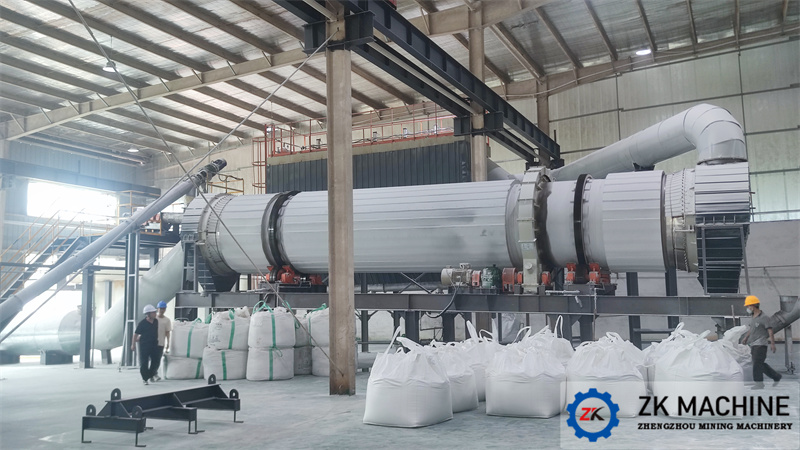- +8618937185591
- +8618937185591
- ec19@zkcorp.com
- +8618937185591


Project Overview
The customer specializes in processing industrial waste salt, specifically anhydrous sodium chloride, with a primary focus on the lithium industry. During the production of lithium, anhydrous sodium sulfate is generated as a by-product, which lithium manufacturers need to dispose of. The anhydrous sodium sulfate produced through this process is of high purity and, after reducing the moisture content to a certain level, can be used as an additive in detergents, laundry powders, coatings, and other applications.
Since anhydrous sodium sulfate is white, the processing equipment must avoid contamination, and therefore, ordinary carbon steel cannot be used for any equipment materials. Additionally, the material is prone to caking, requiring specialized design considerations for the internal structure of the dryer.
Project Solution
After the equipment arrived at the customer's site, it underwent full-load trial production and met all the customer's requirements.
Equipment Description
2.1 Project Name: Anhydrous Sodium Sulfate Drying Project
2.2 Main Equipment: HJ2013 Dryer
2.3 Material: Anhydrous Sodium Sulfate, Moisture Content:<4%
2.4 Production Capacity: 17 t/h
Achievements of Henan Zhengzhou Mining Machinery Co., Ltd.
Henan Zhengzhou Mining Machinery Co., Ltd. has demonstrated its technical expertise in the field of solid waste resource utilization through its achievements in the treatment of sodium sulfate by-products from lithium production lines. The successful application of the HJ2013 drying system not only addresses the challenge of maintaining high color purity during the sodium sulfate drying process but also achieves efficient and low-consumption production goals. This is of significant importance for improving resource utilization efficiency and reducing environmental pollution.
The drying system uses stainless steel materials in contact with the material, ensuring that the sodium sulfate is not contaminated during the drying process and maintaining its purity as a high-value additive. This is crucial for downstream applications in industries such as detergents and coatings. Additionally, the co-current drying process design enables the system to efficiently reduce the moisture content of the material without the need for additional cooling equipment, further lowering energy consumption and operational costs.
Zhengzhou Mining Machinery offers a variety of equipment specifications to meet diverse needs, ranging from small-scale trials to large-scale production, demonstrating its flexibility and adaptability. This customer-centric service philosophy allows the company to provide tailored solutions based on the specific circumstances of different clients, earning widespread market recognition and praise.
Looking ahead, Henan Zhengzhou Mining Machinery Co., Ltd. will continue to deepen its expertise in solid waste treatment technology, driving innovation and breakthroughs to provide more technical support and customized solutions for the resource utilization of solid wastes such as new energy materials and tailings. By promoting the effective treatment and reuse of solid waste, the company will contribute to protecting the ecological environment and fostering sustainable economic and social development, while also securing broader development opportunities and market prospects for itself.